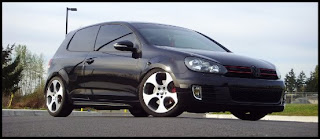
Auto Trader Ten Point Test rating: 73%
Volkswagen marketed the Bora as a sports saloon, but if you believe the hype you’ll be disappointed.
This isn’t a driver’s car because it doesn’t have the chassis to carry it off – but view this booted Golf as a decently styled small premium saloon and you won’t be disillusioned.
1. Looks 7/10
The Bora isn’t a car to set the pulse racing, but it’s still a handsome machine. Also, while it looks different enough from the Golf, it’s pretty clear that the two cars are related – but it doesn’t simply come across as a three-box edition of VW’s best-selling hatch.
There’s no estate Bora (well there is, but it’s sold as a Golf), so the model comes as a three-box saloon only. Even range-topping 2.8 V6 editions look rather subtle, with bigger wheels and some discreet badging the only clues as to what’s under the bonnet. So buy an entry-level 1.6-litre car and you get pretty much the same looks, for rather less money.
2. Looks inside 7/10
Because the Bora is based on the Golf MkIV, its cabin really is a thing of beauty. Flamboyant design no, but superb quality – yes. While flair is missing as this is a typically teutonic interior, it all works with predictable VW efficiency.
Entry-level cars are as well screwed together as the more costly versions, but it’s not until you move up the range a bit that the cabin feels genuinely well stocked and nicely trimmed – those cheaper models have a bit too much plastic in places, and it doesn’t always look like high-quality plastic.
3. Practicality 7/10
If practicality is equated primarily with space and space efficiency, the Bora scores pretty highly here thanks to the fitment of split-fold rear seats for just about all models. There’s also plenty of headroom on offer, but if you regularly need to transport lots of people of the super-sized variety, you’ll probably find the Bora is a bit of a squeeze. That’s because the rear-seat leg room isn’t especially generous unless the front seats are moved forward, compromising the available comfort for those in the front.
4. Ride and Handling 7/10
Although VW occasionally has flashes of true brilliance, its cars are generally safe dynamically, rather than exciting. That’s how it is with the Bora, which offers a typical mainstream front-wheel drive chassis; understeer when really pushed, but neutral handling unless you’re really pressing on.
Intriguingly, the Bora feels more together than the Golf because of its stronger shell. The addition of a rear bulkhead stiffens things up nicely, which helps to sharpen up the handling but this still isn’t a car for hard-core enthusiasts.
The turn in is fine but the steering is too numb, offering little in the way of feedback. As a result, this isn’t a car for B-road blasts – it’s much more suited to motorway cruising or urban runs, thanks to suspension that soaks up the bumps with reasonable aplomb – as long as you don’t opt for a car with massive wheels and ultra-low profile tyres.
5. Performance 8/10
The 1.9TDi turbodiesel tested here is a familiar unit to VW/Audi fans, as it’s been around since Noah was in short trousers. In 130bhp form it’s a bit peaky and feels a bit old-fashioned compared with the 2.0TDi unit offered later, but it’s still a great engine that offers plenty of torque (228lb ft of it) to make decent progress.
Whether your priority is performance or economy there are powerplants biased towards either end of the spectrum. The engine tested here offers the best compromise, with strong performance allied to decent economy being the order of the day. However, the entry-level 1.6-litre petrol unit is quick enough (it has a 119mph top speed) while also offering fuel economy of around 40mpg.
At the other end of the range is the 2.8 VR6, which is a true roadburner with its 146mph top speed – but you’re also likely to get much more than 25mpg out of it.
6. Running costs 8/10
Once again, the wide choice of powerplants allows you to buy the Bora that best suits your pocket when it comes to running costs. Variable servicing is an option for Bora buyers, and it’s worth having as you can potentially cover more miles between visits to the garage. Without it, a Bora needs attention every 10,000 miles or 12 months.
Predictably, it’s the turbodiesel Boras which are the most frugal; the 110bhp edition offers up to 56.5mpg on the official combined cycle. The 130bhp model tested here will allegedly give up to 51.4mpg, and with careful driving it shouldn’t be hard to realise that figure.
7. Reliability 6/10
Despite VW’s old advertising slogan, don’t assume the Bora will give unfailing reliability. The MkIV Golf hasn’t proved to be a paragon of reliability, with a whole raft of potential faults to look out for. Many revolve around the various powerplants offered, such as the 1.8 20v unit suffering from failed ignition coils, snapped timing belts and broken water pumps.
The TDi units can also suffer from power losses due to dirty oil, a faulty mass air flow sensor, faulty temperature sensors and a temperamental ECU. Even the 1.4 and 1.6-litre petrol engines can suffer from shattered plastic timing belt tensioners, although engines are rarely wrecked from these.
Also watch out for broken window winder mechanisms, waterlogged cabins because of a misaligned water shield cover over the pollen filter, plus failed fans for the heating and ventilation systems.
8. Safety 9/10
Volkswagen has thrown everything in its box at the Bora, in a bid to make it as safe as possible. Not only do all cars come with ESP, twin front airbags, traction control, pre-tensioners for the front seat belts and head restraints for all five seats, but there are also three-point seat belts for all of the car’s occupants.
There’s no EuroNCAP crash test result available, but with a decently stiff bodyshell and all the safety kit mentioned above, there’s every reason to suspect that should the worst happen, the Bora would do a pretty good job of looking after you.
9. Equipment 7/10
The Germans have a reputation for being a bit stingy when it comes to standard equipment, and that’s just the case here. Compared with an equivalent Peugeot or Ford you won’t get much standard kit, but that’s not to say that the Bora is poverty-spec.
Even the entry-level Bora S gets air conditioning, an alarm, remote central locking and electric windows all round. Move to an SE and you can add height-adjustable seats for those in the front, 16” alloy wheels, wood trim inserts, climate control and a CD autochanger along with front foglights and a multi-function steering wheel. With an extensive options list, do some searching and you should be able to track down a really high-spec car where someone has got a bit carried away with the options list.
10. X-Factor 7/10
The Bora is VW’s take on the compact sports saloon, and while it’s got the quality aspect all sewn up, it isn’t dynamically sharp enough to carry things off. See the Bora as a 3-Series alternative and you’ll be missing the point; instead you need to view it as a superior rival to more mainstream small saloons such as the Renault Megane or Ford Focus.
Key facts
Model tested: Volkswagen Bora 1.9TDi PD 130 SE
On the road price: £16,900
Price range: £13,335 – £19,950
Date tested: March 2009
Road tester: Richard Dredge



